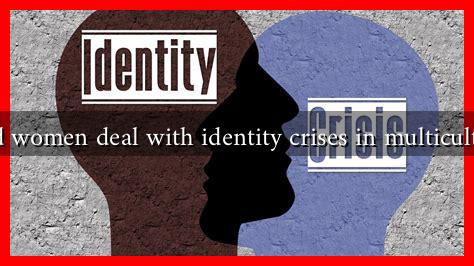-
Table of Contents
How Do Veiled Women Deal with Identity Crises in Multicultural Societies?
In an increasingly globalized world, multicultural societies are becoming the norm rather than the exception. Within these diverse environments, veiled women often face unique challenges related to their identity. The intersection of cultural, religious, and societal expectations can lead to identity crises, prompting these women to navigate complex social landscapes. This article explores how veiled women cope with identity crises in multicultural societies, drawing on case studies, statistics, and personal narratives.
The Veil as a Symbol of Identity
The veil, whether it be a hijab, niqab, or burqa, serves as a powerful symbol of identity for many Muslim women. It represents not only religious beliefs but also cultural heritage and personal choice. However, in multicultural societies, the veil can also become a source of tension and misunderstanding. Women who wear veils may find themselves caught between their cultural identity and the societal pressures to conform to Western ideals of femininity.
Challenges Faced by Veiled Women
Veiled women often encounter various challenges that can contribute to identity crises, including:
- Discrimination and Prejudice: Many veiled women face discrimination in public spaces, workplaces, and educational institutions. A study by the Pew Research Center found that 62% of Muslim women in Western countries reported experiencing discrimination due to their attire.
- Social Isolation: The veil can lead to social isolation, as veiled women may feel excluded from mainstream social activities. This isolation can exacerbate feelings of alienation and identity confusion.
- Pressure to Assimilate: In multicultural societies, veiled women may feel pressured to assimilate into the dominant culture, leading to internal conflict between their cultural identity and societal expectations.
Strategies for Coping with Identity Crises
Despite these challenges, many veiled women develop strategies to cope with their identity crises. These strategies can include:
- Community Support: Building a strong support network within their cultural or religious community can provide emotional and social support. Many women find solace in shared experiences and collective identity.
- Education and Advocacy: Engaging in educational initiatives and advocacy work can empower veiled women to articulate their identities and challenge stereotypes. For instance, organizations like Muslim Women’s Network UK work to amplify the voices of Muslim women and promote understanding.
- Personal Reflection: Many women engage in personal reflection and self-exploration to reconcile their cultural and religious identities with their experiences in multicultural societies. This can involve journaling, therapy, or participating in cultural events.
Case Studies: Real-Life Experiences
To illustrate the coping mechanisms of veiled women, consider the following case studies:
- Amina: Amina, a 28-year-old hijab-wearing woman in Canada, faced discrimination at her workplace. Instead of succumbing to isolation, she joined a local Muslim women’s group that provided her with a sense of belonging and empowerment. Through this community, she learned to advocate for her rights and educate her colleagues about her culture.
- Fatima: Fatima, a university student in the UK, struggled with her identity as a veiled woman in a predominantly non-Muslim environment. She began writing a blog to share her experiences, which not only helped her process her feelings but also connected her with other women facing similar challenges.
Conclusion: Embracing Complexity
Veiled women in multicultural societies navigate a complex web of identity challenges. While they may face discrimination, social isolation, and pressure to assimilate, many find strength in community support, education, and personal reflection. By embracing their multifaceted identities, these women contribute to the rich tapestry of multicultural societies, challenging stereotypes and fostering understanding. As we continue to engage with diverse cultures, it is essential to recognize and support the unique experiences of veiled women, ensuring that their voices are heard and valued.

